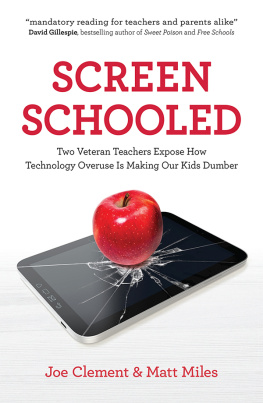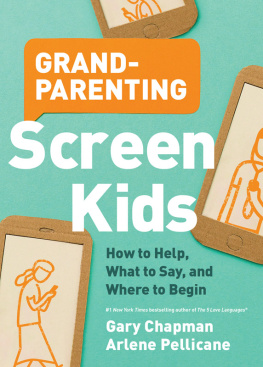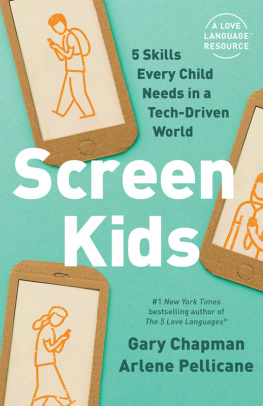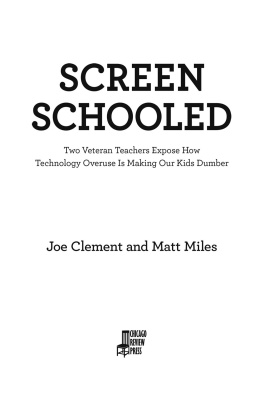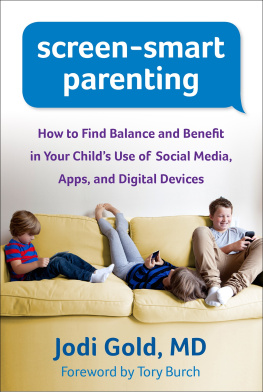Praise for Screen Schooled
Screen Schooled is the most vivid, intelligent, and compelling book I have yet seen on what technology is doing for, and to, our schools.
Jay Mathews, author of Work Hard. Be Nice. How Two Inspired Teachers Created the Most Promising Schools in America
A sobering exposure of the damage wrought by constant screen exposure on developing brains. These veteran teachers show us why screens undermine learning and leave kids unable to think on their own.
Richard E. Cytowic, MD, professor of neurology at George Washington University and author of the The Fallible Mind column at PsychologyToday.com
With striking clarity, Screen Schooled reveals why an education increasingly centered around digital devices is failing our children.
Richard Freed, PhD, author of Wired Child: Reclaiming Childhood in a Digital Age
Bravo to Joe Clement and Matt Miles, two savvy and experienced teachers, for masterfully pulling back the veil of the tech-in-the-classroom hoax.
Dr. Nicholas Kardaras, author of Glow Kids: How Screen Addiction Is Hijacking Our Kids and How to Break the Trance
Joe Clement and Matt Miles lay out a pressing truth that runs squarely against the hype of education technology: screens are not the key to achievement. They are a glossy distraction from the real intellectual work of learning.
Mark Bauerlein, author of The Dumbest Generation: How the Digital Age Stupefies Young Americans and Jeopardizes Our Future (Or, Dont Trust Anyone Under 30)
Published by Black Inc.,
an imprint of Schwartz Publishing Pty Ltd
Level 1, 221 Drummond Street
Carlton VIC 3053, Australia
www.blackincbooks.com
Original edition published by Chicago Review Press Incorporated,
814 N. Franklin Street
Chicago IL 60610
Copyright Joe Clement & Matt Miles 2018
This edition published in 2018
Jo Clement & Matt Miles assert their right to be known as the author of this work.
ALL RIGHTS RESERVED.
No part of this publication may be reproduced, stored in a retrieval system, or transmitted in any form by any means electronic, mechanical, photocopying, recording or otherwise without the prior consent of the publishers.
9781863959995 (paperback)
9781743820193 (ebook)

Cover design by Mark Whitaker / MTWdesign.net
Typsetting: Nord Compo
Authors Note
T O PROTECT THE IDENTITY OF STUDENTS, parents, and colleagues, some names and minor details have been changed. For ease of reading, weve written the book in one voice and one point of view, but it was written together in full partnership. It represents a composite of both authors ideas and experiences. Finally, we should note that the opinions expressed in this book are our own. We are not in any way speaking on behalf of our employer.
We would like to encourage parents, educators, scientists, and others to engage with us about the critical issues discussed in this book. (We recognize the irony of using technology to connect with readers, but would categorize this as an example of the productive and collaborative uses of technology were seeing too little of in schools today.) Please visit us online at www.screenschooled.com to learn more about us and the book, at www.paleoeducation.com to learn more about the research driving this movement and about ways to teach and learn simpler, and at our Google community Beyond the Screens to share ideas and resources with like-minded parents and professionals.
Introduction
M AKE A LIST OF TEN THINGS that kids today need. Go ahead. Ill wait.
Thanks for doing that. Now look at that list. Does it include more screen time? I didnt think so. Mine doesnt either. If I had asked you to make a list of twenty things kids today need, would more screen time have been on that one? How about if it were a list of a hundred or a thousand things that kids need? The point is that while there is nearly universal agreement that kids today do not need more time on screens, schools are doing what they can to make sure kids spend more time on screens.
Matt and I have been teaching for over thirty combined years. We have taught thirteen different subjects to students in six different grades. We coach three different sports and routinely interact with students all over the age, socioeconomic, racial, and social spectrums. We also have kids of our own, ranging in age from one to eighteen. When it comes to kids, we certainly have not seen it all, but weve seen a lot. We have also interviewed dozens of colleagues, scientists, and politicians and have read everything we can about the intersection of digital technologies and the way kids learn. We are in a unique position to share with parents what is happening in schools when it comes to screen usage and how its affecting our kids. In short, its not good.
You may well be thinking, These are just two curmudgeonly, angry teachers railing against these young whippersnappers and their newfangled contraptions. Not exactly. While we are teachers, we are neither curmudgeonly, angry, nor antitechnology. Id like to think were too young to be curmudgeonly, and we love teaching far too much to be angry. As far as our comfort with technology, I was a UNIX system administrator before becoming a teacher. Matt was an IT major in college before a last-minute switch to education. He is his departments technology representative and teaches other teachers how to use the schools grading, test creation, and attendance software. We are more proficient in Excel and Access than any teachers we know. But several years ago, the two of us began to question a notion that we were hearing with greater frequencythat more screens and technology should be incorporated into young peoples education. This idea was repeated over and over in educational circles, so much that it just became accepted as truth. Schools all over the country began spending billions of dollars on educational technology and requiring teachers to incorporate it into their classrooms.
Before this time, educational technology, or ed-tech, was something used in the background of education, designed to help solve administrative problems. Old paper gradebooks were replaced with digital ones. These programs did the calculations for teachers and made posting grades much easier. Attendance was also digitized. Teachers could mark a student absent, and an automated phone call home could be made with the click of a button. Then schools started adopting teacher webpages where all the digital materials used in a class could be posted. Now students could access materials they either missed or lost without having to ask the teacher for copies of their notes and handouts. All of these changes made the lives of the teachers, administrators, and students much easier and didnt interfere with educational goals.
But by the mid-2000s ed-techs focus became more student centered. Increasingly, lessons and instruction were digitized and automated. Schools began spending heavily on laptops and iPads. Online textbooks replaced paper ones. Teachers were trained in the latest and greatest educational software. We were shown how to incorporate YouTube clips into presentations, set up web-based scavenger hunts, and replace our old, boring PowerPoints with Prezis (essentially PowerPoint with more spinning and movement). When students found these projects cheesy (because they were still educational), teachers were encouraged to kick it up a notch. We need to meet kids where they are is a phrase echoed at every ed-tech presentation. Now teachers are encouraged to use laptops and iPads in every class. Instead of introducing education through educational software, teachers are now struggling to cram education into the technology with which young people are comfortable, like social media and video games.
Next page
